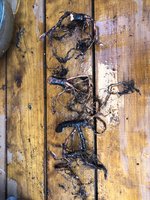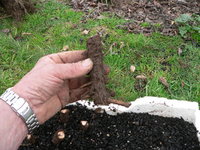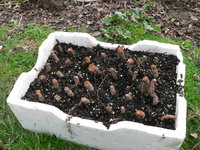Root cuttings will often grow no matter what you do to them. you'll see that if you make the mistake of digging near a Chinese elm tree or other species prone to root suckering. I've even had some grow after planting the roots upside down but generally best results from planting the roots vertical with around 1/2" to 1" of the top (part which was closest to the tree) above soil level.
Some pics of Chinese elm root cuttings:
View attachment 450037View attachment 450038View attachment 450039
Even quite thick roots will strike if you have them and that's a good start on your next Chinese elm trunk!
View attachment 450040
Root cuttings planted. These are thicker so I have a little more than usual above soil level.
View attachment 450041
12 months later:
View attachment 450034
The 2 long shoots have grown from the top of the root cutting and roots from the bottom. What was once a piece of root is not the first part of the new trunk.
View attachment 450035
look close to see the join between old root and new shoot (quite low this time). The difference in thickness gives a good start to trunk taper.
View attachment 450036
A couple of years later:
View attachment 450043View attachment 450044
And after a few more years:
This one is English elm but similar response to Chinese elm. You can probably pick out the change in diameter from the original root to the new part of the trunk. This one has also grown a new, thinner branch part way down the original root - bonus.
View attachment 450042
A couple more really small Chinese elms grown from root cuttings:
Start with a straight piece of root and keep several of the new shoots for broom style
View attachment 450047
Use a long, bendy root for a literati style shohin Chinese elm
View attachment 450046


















